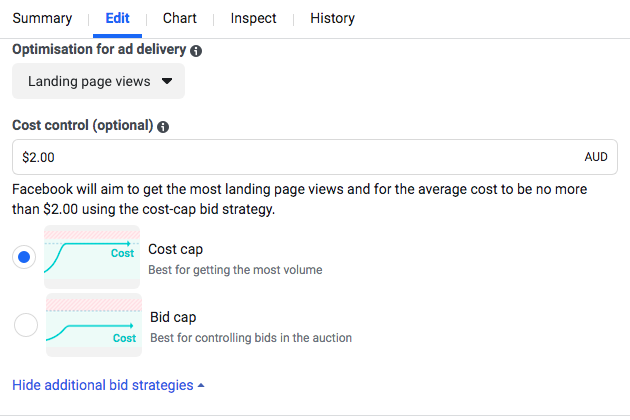If you’re running social ads for your organisation, firstly, congrats, you are DEFINITELY not alone. If you’re not, that’s probably a discussion you should have with us separately. (Seriously, get in touch.)
Social advertising is prevalent across all industries, and charities in recent years are getting super savvy and sprawling all over key platforms. (Why, I’ve had to mute some ads as “not relevant” on my Instagram account, I’m so inundated!)
Orgs might be getting savvier on social, but there are 3 simple mistakes I see time-and-time again when I audit or optimise Facebook campaigns for clients.
Mistake 1: Your Campaign Strategy/Bid Is Wrong
Leads, donations, activists, registrants – yep you’ll find them all on social platforms. But do you know which campaign strategy is right to get what you want?
There are 3 main campaign set ups charities use to get action:
- Traffic: driving people to a landing page
- Lead Gen: FB/IG forms that allow you to capture the lead on social
- Conversion: targeting people most likely to convert for the action you have indicated
Of course there are way more things you could be doing – video views, products for gift shops, brand awareness etc. But these are the main ones you will use. And often, they are set up without consideration for what they are likely to achieve.
Lead gen form are great and have REALLY taken off for charities in the last year – simple and effective & usually low cost per lead. But over time they tend to have a higher cost per lead & overall cost, and higher frequency because you are bidding on impressions.
Yes, Conversion campaigns work best to convert (duh). But did you know Conversion campaigns usually have a higher cost per action for charities than e-commerce organisations? And did you know it’s usually better for longer campaigns to get you the best results? Or that you should focus your Conversion campaign on remarketing audiences to get the best bang for your buck?
Traffic campaigns don’t always drive the action, but for shorter campaigns they are usually the best to build traffic, a remarketing audience and drive a lower cost per action. Also, you can bid on unique reach and link clicks instead of a costly impression bid. This means your frequency will be lower and ad exhaustion will take longer to settle in – plus you’ll spend your budget more wisely, not widely. If your traffic campaign isn’t doing so great, your landing page is probably the problem.
Mistake 2: Your Budget Is Being Pilfered
How good is that word, pilfered? Unfortunately, a lot of organsations I’ve worked with tend to pilfer their own budget away. Mostly this is due to lack of resources, sometimes lack of knowledge, often due to set-and-forget campaigns.

Facebook is clever – it will spend your money intelligently to get you a good return on investment based on how you set up your campaign (see Mistake 1). But guess what? Facebook is CLEVER! It’s going to spend your money so it makes money.
- If you have a daily budget, Facebook will spend the entire budget for the day, even if results aren’t that good
- Same with lifetime budget, if you set it and forget it, Facebook will spend your scheduled lifetime budget
- Facebook will serve your ads all day (even when your audience is sleeping) to spend your budget (unless you specify otherwise)
- If you don’t set a bid cap, and bid for “lowest cost” for example, Facebook will get you the best results based on what it can, instead of what you are willing to spend for a cost per action
What this means is, unfortunately, your cost per action (lead, donation, page view etc) will suffer greatly.
While I appreciate a lot of organisations don’t have the time or resources to, I implore that you do keep a watchful eye on your budget and return on investment. If it’s not working, you can and should turn it off (or learn how to better optimise it).
Just because everyone is on Facebook trying to get results, doesn’t mean you should be needlessly throwing away your money trying to make something work.
Mistake 3: Your Remarketing Is Missing The Mark
We all know we should be remarketing. I mean, who doesn’t want to be constantly stalked and reminded about that 1 time they clicked on your ad? Seriously, it’s a necessary strategy. These people care about you and have shown interest.
But you know what most of you are doing wrong? You completely forget that they have ALREADY seen your ad. And what you end up doing is creating a remarketing audience that you feed the EXACT same ad they have already seen, on average about 3 times.
If you were the target audience (and think about shopping sites or other websites that you’ve clicked on, and you have been), tell me, wouldn’t you get annoyed at seeing the same ad (copy, image & all) relentlessly?
Don’t answer, coz obviously the answer is HECK YES.
The beauty of remarketing is that you know:
- These people give a damn about what you have just advertised to them
- These people are considering taking an action
- These people just need a little nudging and reminder to take action
Instead of re-serving them the same ad, you need to push them along that funnel to complete the initiated action. Get a little cheeky, get in their face a little, change up the copy & creative, nudge them to take action:
“Hey, I know you’ve seen my ad and that you care. It’s not too late to donate/sign up/take action. Go on, do it today!”
Well, you don’t have to be that aggressive. But, you get my gist. Here’s 2 great examples of savvy remarketing (unfortunately, I was hard-pressed to find charity examples).


So there you have it. The 3 simple things that could change up your social advertising game. I could rant about Facebook advertising all day. So if you DO want to know more, drop me a line: ask.us@parachutedigital.com.au
(And if you do change up these things & see some improvements, share the good news with me! If you don’t, well I’m sure I could give you tons more advice on what to do!)
